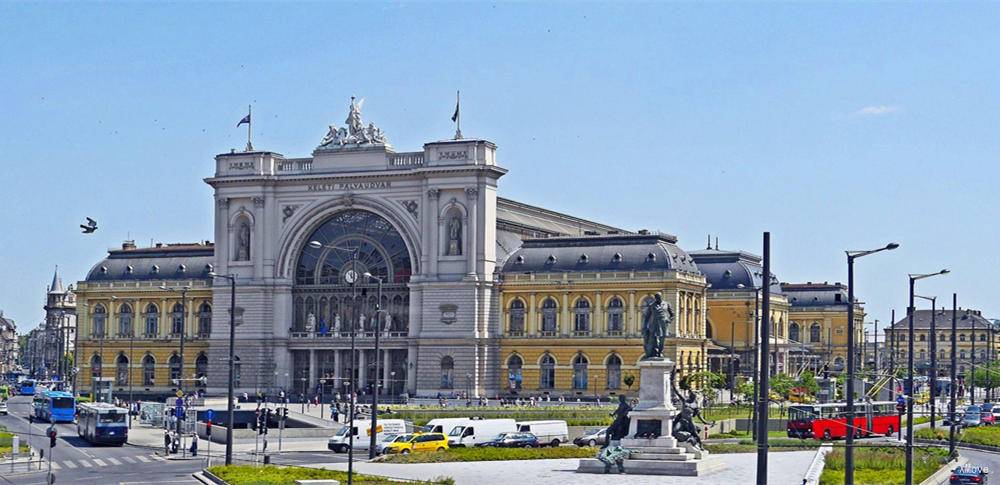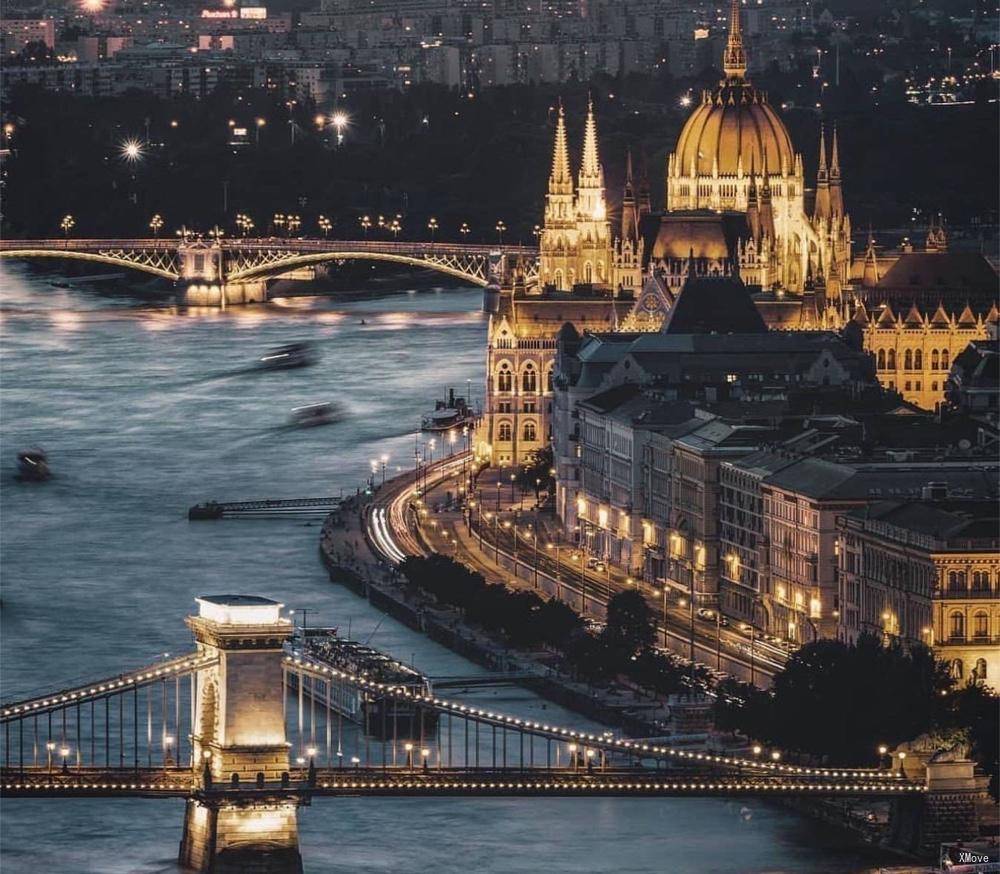Salzburg Central to Budapest Central: Trains, Buses, Fares, Today's Connections, Routes, Duration, Types of Trains, Station Guides, Tips, Journey
Austria Train Tickets
Scan QR code, download App to see Salzburg Central's more live update, station guide, plan and photos



Train schedule Salzburg Central(Salzburg Hbf) to Budapest Central(Budapest Keleti Pályaudva)
Popular train routes departing from Salzburg Central(Salzburg Hbf)
* Bischofshofen
* Kirchberg In Tirol
* Oberaudorf
* Knittelfeld
* Wolfgang(Kr Hanau)
* Kiel Central(Kiel Hbf)
* Muenchen Marienplatz(München Marienplatz)
Popular train routes arriving in Salzburg Central(Salzburg Hbf)
* 웨스타하무(Westerham)
* 로펜 (오버베이)(Laufen(Oberbay))
* 프랑크푸르트(Frankfurt(M)Flughafen)
* 베를린 중앙역 (딥)(Berlin Hbf (Tief))
* 로라 흐 Hbf(Lörrach Hbf)
* 프랑크푸르트(Frankfurt(Main)West)
* 스트라스부르(Strasbourg)
Popular train routes departing from Budapest Central(Budapest Keleti Pályaudva)
* Vienna Airport(Wien Flughafen)
* Vienna Airport(Wien Flughafen)
* Rotterdam Centraal
* Graz Central(Graz Hbf)
* Bratislava Hlavná Stanica(Bratislava Hl.St.)
* Kolin(Cz)(Kolín)
* Frankfurt(M) Airport(Frankfurt(M)Flughafen)
Popular train routes arriving in Budapest Central(Budapest Keleti Pályaudva)
* Salzwedel
* Landstuhl
* Zürich Hb
* Belgrade(Beograd)
* Zupanja
* Linz Central(Linz Hbf)
* Zagreb Glavni Kolodvor(Zagreb Glavni Kolod.)

Salzburg Central
Salzburg Hauptbahnhof is not large, but it is one of the important hubs of the European rail transit line:
Take the 1st, 2nd, 3rd, 5th, 6th and 25th bus to get off at Hauptbahnhof. About 1.5 km from the Old Town, the western part of the station is a commercial area. The exit to the east can lead to the old town. The station is not large, but the interior of the station is very modern, in stark contrast to the ancient legend of Salzburg. The train to Vienna is only 2h, Salzburg is very close to Germany's Best Western Plus, we can take the bus or take the train. It is convenient, cheap and time-saving to take the bus. The car number is BUS 480.
There are also high-speed trains to Switzerland, Budapest and the night express trains in Milan.
Salzburg Central - Station Guide | Departures and Arrivals | Popular RoutesBudapest Central
The train connects Budapest with all the central and eastern countries of Europe. Unless otherwise indicated, all trains will arrive at Budapest Keleti pályaudva, so if you arrive in Budapest by train, you should get off at East Railway Station. All international trains depart from the Keleti station, and domestic trains to Miskolc, Eger, Győr and Szombathely also depart from here.
You can choose to take the M2 line and get off at the Keleti pályaudvar stop. The starting point of Metro Line 4, the subway M2 and M4 meet here.
Budapest Central - Station Guide | Departures and Arrivals | Popular Routes

Salzburg (German: [ˈzaltsbʊʁk] ; literally "Salt Fortress") is the capital city of the State of Salzburg and the fourth-largest city in Austria. Its historic centre (German: Altstadt) is renowned for its Baroque architecture and is one of the best-preserved city centres north of the Alps, with 27 churches. It was listed as a UNESCO World Heritage Site in 1996. The city has three universities and a large population of students. Tourists also visit Salzburg to tour the historic centre and the scenic Alpine surroundings. Salzburg was the birthplace of the 18th-century composer Wolfgang Amadeus Mozart. In the mid‑20th century, the city was the setting for the musical play and film The Sound of Music.
Salzburg - Guide, Attractions, Tours, Sightseeings | Train from/to Salzburg | Popular RoutesBudapest (, Hungarian pronunciation: [ˈbudɒpɛʃt]) is the capital and the most populous city of Hungary, and the tenth-largest city in the European Union by population within city limits. The city has an estimated population of 1,752,286 over a land area of about 525 square kilometres (203 square miles). Budapest is both a city and county, and forms the centre of the Budapest metropolitan area, which has an area of 7,626 square kilometres (2,944 square miles) and a population of 3,303,786, comprising 33% of the population of Hungary.The history of Budapest began when an early Celtic settlement transformed into the Roman town of Aquincum, the capital of Lower Pannonia. The Hungarians arrived in the territory in the late 9th century. The area was pillaged by the Mongols in 1241. Buda, the settlements on the west bank of the river, became one of the centres of Renaissance humanist culture by the 15th century. The Battle of Mohács, in 1526, was followed by nearly 150 years of Ottoman rule. After the reconquest of Buda in 1686, the region entered a new age of prosperity. Pest-Buda became a global city with the unification of Buda, Óbuda, and Pest on 17 November 1873, with the name 'Budapest' given to the new capital. Budapest also became the co-capital of the Austro-Hungarian Empire, a great power that dissolved in 1918, following World War I. The city was the focal point of the Hungarian Revolution of 1848, the Battle of Budapest in 1945, and the Hungarian Revolution of 1956.Budapest is an Alpha − global city with strengths in commerce, finance, media, art, fashion, research, technology, education, and entertainment. It is Hungary's financial centre and was ranked as the second fastest-developing urban economy in Europe. Budapest is the headquarters of the European Institute of Innovation and Technology, the European Police College and the first foreign office of the China Investment Promotion Agency. Over 40 colleges and universities are located in Budapest, including the Eötvös Loránd University, the Semmelweis University and the Budapest University of Technology and Economics. Opened in 1896, the city's subway system, the Budapest Metro, serves 1.27 million, while the Budapest Tram Network serves 1.08 million passengers daily.Among Budapest's important museums and cultural institutions is the Museum of Fine Arts. Further famous cultural institutions are the Hungarian National Museum, House of Terror, Franz Liszt Academy of Music, Hungarian State Opera House and National Széchényi Library. The central area of the city along the Danube River is classified as a UNESCO World Heritage Site and has several notable monuments, including the Hungarian Parliament, Buda Castle, Fisherman's Bastion, Gresham Palace, Széchenyi Chain Bridge, Matthias Church and the Liberty Statue. Other famous landmarks include Andrássy Avenue, St. Stephen's Basilica, Heroes' Square, the Great Market Hall, the Nyugati Railway Station built by the Eiffel Company of Paris in 1877 and the second-oldest metro line in the world, the Millennium Underground Railway. The city also has around 80 geothermal springs, the largest thermal water cave system, second largest synagogue, and third largest Parliament building in the world. Budapest attracts 4.4 million international tourists per year, making it a popular destination in Europe.
Budapest - Guide, Attractions, Tours, Sightseeings | Train from/to Budapest | Popular Routes
Austria Train Tickets
Scan QR code, download App to see Salzburg Central's more live update, station guide, plan and photos



Hot Journeys
* Rovaniemi(Rovaniemi) -> Helsinki(Helsinki)
* Frankfurt -> Paris
* Interlaken -> Lucerne(Luzern)
* Lucerne(Luzern) -> Arth
* Paris -> Avignon
* Beijing(北京) -> Shanghai(上海)
* Stuttgart -> Frankfurt Airport(Frankfurt Flughafen)
* Berlin(Berlin) -> Munich(Müchen)
* Stuttgart -> Frankfurt
* Munich(Müchen) -> Dusseldorf(Düsseldorf)
* Frankfurt -> Cologne(Köln)
* Florence -> Rome(Roma)
* Milan -> Venice(Venezia)
* Rome(Roma) -> Naples
* Paris -> Frankfurt
* Seoul(서울) -> Jeonju Si(전주시)
* Venice(Venezia) -> Florence
* London(London) -> Brussels(Bruxelles)
